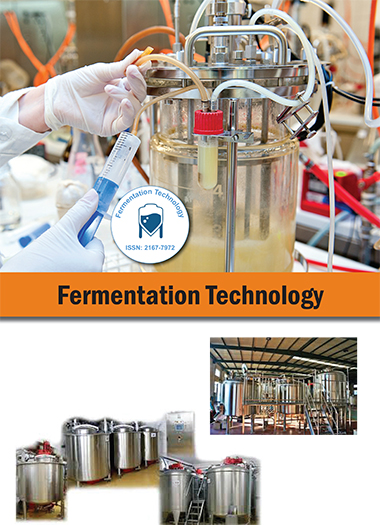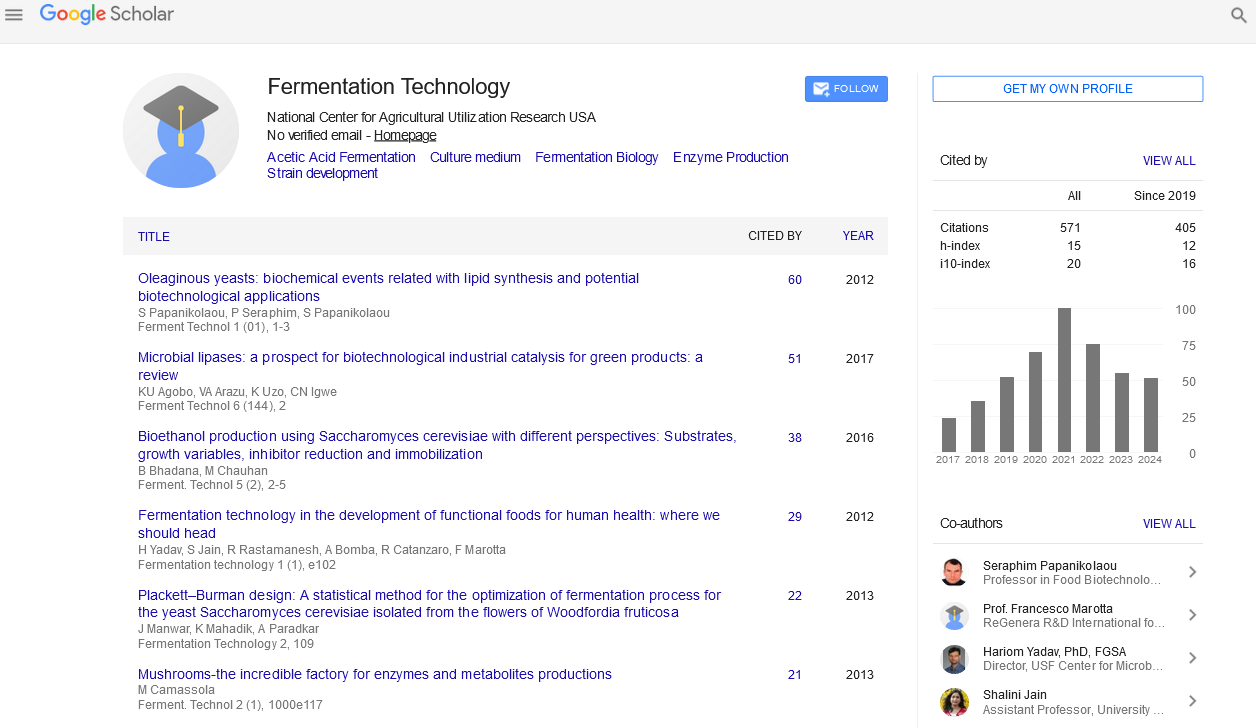Indexed In
- Open J Gate
- Genamics JournalSeek
- Access to Global Online Research in Agriculture (AGORA)
- RefSeek
- Hamdard University
- EBSCO A-Z
- OCLC- WorldCat
- Publons
Useful Links
Share This Page
Journal Flyer

Open Access Journals
- Agri and Aquaculture
- Biochemistry
- Bioinformatics & Systems Biology
- Business & Management
- Chemistry
- Clinical Sciences
- Engineering
- Food & Nutrition
- General Science
- Genetics & Molecular Biology
- Immunology & Microbiology
- Medical Sciences
- Neuroscience & Psychology
- Nursing & Health Care
- Pharmaceutical Sciences
Commentary - (2023) Volume 12, Issue 1
A Detailed Description of Vinegar
Maria Fedorov*Received: 03-Mar-2023, Manuscript No. FMT-23-20063; Editor assigned: 06-Mar-2023, Pre QC No. FMT-23-20063(PQ); Reviewed: 21-Mar-2023, QC No. FMT-23-20063; Revised: 28-Mar-2023, Manuscript No. FMT-23-20063(R); Published: 07-Apr-2023, DOI: 10.4172/2167-7972.23.12.157
Description
Vinegar is typically used in pickled ground products and in dressing plates mixed with mayonnaise and green dressings, mustard and other food sauces. While serving as a food for its flavor and value, the potential health benefits of vinegar have caused experts to consider its use in foods that have long existed. It has been promoted by many medical professionals, and the beneficial food properties of vinegar have been recognized in much scientific and popular dissemination. The proposed beneficial healing properties of vinegar include antibacterial activity, blood pressure lowering, antioxidant activity, reduced effects of diabetes, prevention of cardiovascular disease, and post-exercise Increased energy includes (vinegar is a liquid product released by heavy drinkers and leads to acidic aging of the sugar source. They are used as medicine in many societies and are said to have beneficial effects on health with regular use.
Due to nutrients and other bioactive compounds, it contributes pharmacological effects such as antibacterial, anti diabetic, antioxidant, anti-obesity and antihypertensive effects. Vinegar is obtained from raw materials containing sugars and starches through a two-step aging process, first producing ethanol, which in turn produces an acidic caustic. Vinegar is made by pressing organic produce such as grapes, apples, plums, coconuts, tomatoes, rice and potatoes. Acidic Corrosive Microorganisms are available throughout the climate.
They can grow in food materials containing sugar or aged products containing alcohol. Different types of fruits have been isolated from different types of vinegar, including white wine, red wine, soul, juice, traditional balsamic vinegar, rice, and modern vinegar made by suspension culture with air circulation.
Types of vinegar
White wine vinegar: This is most commonly found in Indian kitchens. This vinegar is made from grain-based ethanol or acid caustic soda mixed with water, making it more solvent-based and suitable for cooking, also useful for household cleaning.
Rice vinegar: This pale yellow assortment tastes better when contrasted with various vinegars. It is made from rice wine and is commonly used for marinating meat, making plunges and dressings.
Balsamic vinegar: Made directly from grapes and contains no alcohol. It has a blackish tint and is the best of all the different looking vinegars. Serve on a plate with mixed vegetable dressings or use as a sauce/plunge for finger foods.
Apple cider vinegar: Besides adding a mild tartness to dishes, apple cider vinegar has several other medicinal benefits, especially for skin and hair. Made from apple juice, it has an unmistakable fruity aroma. Works very well in preparing nonvegan dishes, oatmeal and smoothies.
Wine vinegar: Red wine vinegar is slightly more effective and acidic than white wine vinegar, which is often used in European dishes such as sautéed vegetables and Mexican salsas.
Vinegar is an off-the-shelf product that can be added to the dinner in no time. A vast research collection demonstrates the useful properties of the whole and the caustic and chlorogenic caustic potential of the individual parts. Vinegar may help control blood sugar and blood lipids, weight loss, and high blood pressure, and thus may help manage type 2 diabetes. Because of its antibacterial properties, vinegar helps treat physical ailments such as nail fungus, warts, and ear infections. It is also effective for topical treatment of skin infections and burns.
Citation: Fedorov M (2023) A Detailed Description of Vinegar. Ferment Technol. 12:157.
Copyright: © 2023 Fedorov M. This is an open-access article distributed under the terms of the Creative Commons Attribution License, which permits unrestricted use, distribution, and reproduction in any medium, provided the original author and source are credited.

